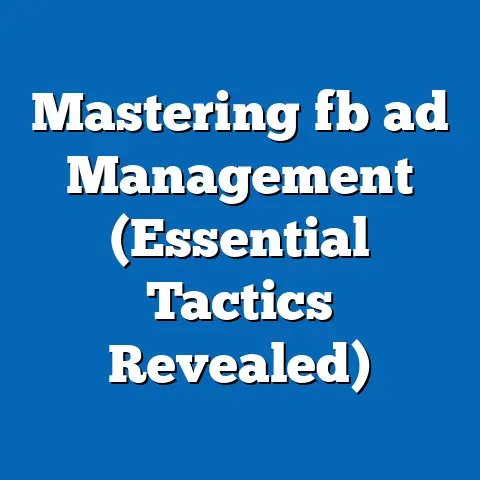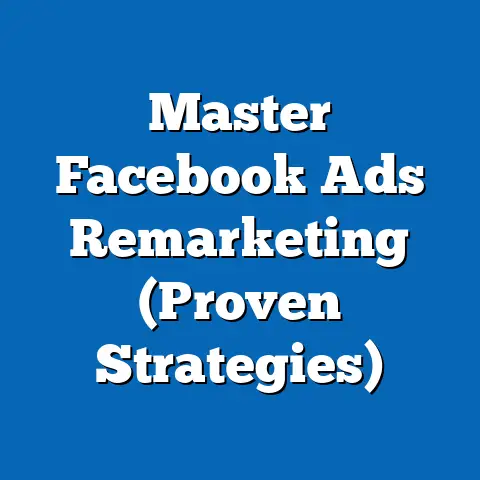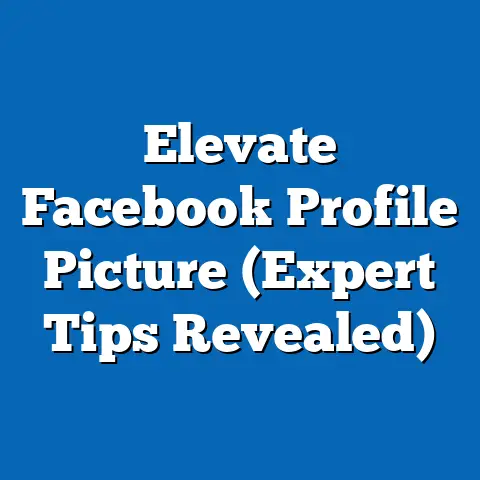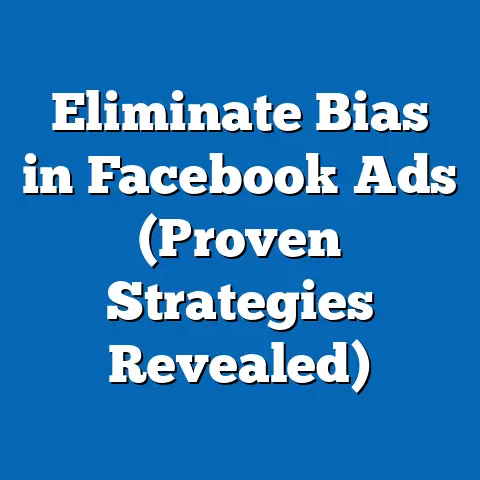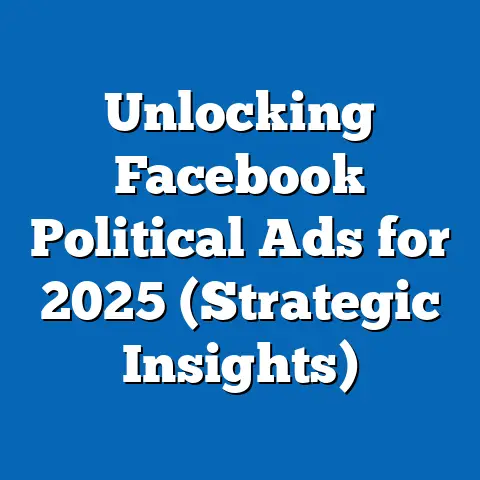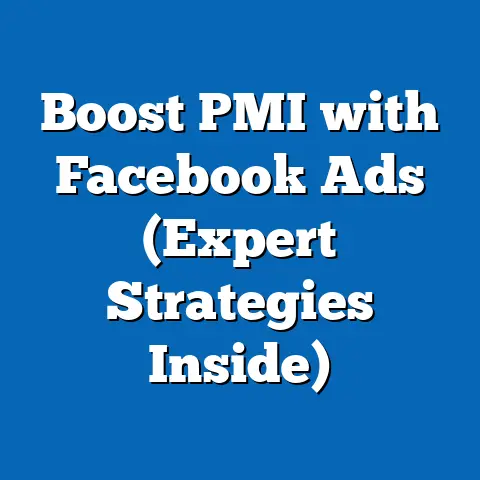Mastering CPM in Dropshipping Facebook Ads (Boost ROI)
Advertising has come a long way. Imagine a time before the internet, where businesses relied on printed ads in newspapers, magazines, and the power of word-of-mouth. These methods, while effective in their time, lacked the precision and scale we see today. The evolution of advertising is a fascinating journey, leading us to the digital age and the rise of social media platforms like Facebook.
Facebook has revolutionized the advertising landscape. With its massive user base and sophisticated targeting capabilities, it offers businesses an unprecedented opportunity to reach potential customers. For dropshippers, this platform is a lifeline. The dropshipping business model, which has seen explosive growth in recent years, relies heavily on effective marketing to connect with consumers. And what better place to find those consumers than on the world’s largest social network?
Understanding CPM
CPM, which stands for Cost Per Mille (or Cost Per Thousand), is a fundamental metric in Facebook advertising. It represents the cost you pay for one thousand impressions of your ad. An impression is counted each time your ad is displayed to a user, regardless of whether they click on it or not.
Why is CPM Important?
CPM is a crucial indicator of your ad campaign’s efficiency and overall cost-effectiveness. It gives you a clear picture of how much you’re spending to get your ad seen by your target audience. By understanding and optimizing your CPM, you can:
- Reduce Your Advertising Costs: Lowering your CPM means you’re paying less to reach the same number of people, directly impacting your bottom line.
- Improve Your ROI: By getting more impressions for less money, you increase the potential for conversions and ultimately boost your return on investment.
- Compare Campaign Performance: CPM allows you to compare the cost-effectiveness of different ad campaigns, targeting options, and ad creatives.
- Identify Areas for Optimization: A high CPM can signal underlying issues with your targeting, ad quality, or bidding strategy, prompting you to make necessary adjustments.
CPM vs. CPC and CPA
It’s essential to understand how CPM differs from other common advertising metrics like CPC (Cost Per Click) and CPA (Cost Per Acquisition):
- CPC (Cost Per Click): Measures the cost you pay each time someone clicks on your ad. CPC focuses on driving traffic to your website or landing page.
- CPA (Cost Per Acquisition): Measures the cost you pay for each conversion, such as a purchase or sign-up. CPA focuses on achieving specific business goals.
While all three metrics are important, CPM provides a broader view of your ad’s visibility and cost-effectiveness. A low CPM doesn’t necessarily guarantee high conversions, but it ensures that you’re reaching a large audience at a reasonable price.
How Facebook Calculates CPM
Facebook’s algorithm calculates CPM based on a variety of factors, including:
- Ad Quality: Facebook rewards high-quality ads that are relevant and engaging to users. Ads with high engagement rates (likes, comments, shares) tend to have lower CPMs.
- Relevance Score: This score reflects how relevant your ad is to your target audience. A higher relevance score typically leads to a lower CPM.
- Target Audience: The size and competition within your target audience influence your CPM. Highly competitive audiences tend to have higher CPMs.
- Bidding Strategy: Your bidding strategy (automatic or manual) impacts how Facebook bids on ad placements. Choosing the right strategy can help you optimize your CPM.
- Ad Placement: The placement of your ad (e.g., Facebook News Feed, Instagram Stories) can affect your CPM. Some placements are more competitive than others.
- Time of Year: CPMs tend to fluctuate throughout the year, with higher costs during peak advertising seasons like holidays.
My Experience: CPM in Action
I remember one particular dropshipping campaign I ran for a trendy new phone case. Initially, my CPM was quite high, around $15 per thousand impressions. I knew I needed to bring that number down to achieve my desired ROI. After analyzing my campaign data, I realized my targeting was too broad. I was targeting a large age range with generic interests. By narrowing my audience to specific age groups interested in mobile technology and fashion, I saw a significant drop in my CPM, eventually bringing it down to around $8. This simple adjustment drastically improved my campaign’s profitability.
Takeaway: Understanding CPM is critical for dropshippers. It provides valuable insights into your ad campaign’s efficiency and cost-effectiveness. By optimizing your CPM, you can reduce your advertising costs, improve your ROI, and ultimately drive more sales.
The Role of Audience Targeting in CPM
Precise audience targeting is the cornerstone of successful Facebook advertising, and it plays a pivotal role in determining your CPM. Think of it like this: if you’re trying to sell gourmet dog treats, would you advertise to everyone on Facebook, or would you focus on people who own dogs and are interested in pet care? The answer is obvious.
Why is Audience Targeting So Important?
Targeting the right audience ensures that your ads are seen by people who are most likely to be interested in your products or services. This leads to:
- Higher Engagement Rates: When your ads resonate with your audience, they’re more likely to click, like, comment, and share, which in turn improves your ad quality and lowers your CPM.
- Increased Conversion Rates: Targeting the right people increases the chances that they’ll actually purchase your products, boosting your ROI.
- Reduced Ad Waste: By focusing your advertising efforts on a specific audience, you avoid wasting money on impressions that are unlikely to result in a sale.
Facebook Targeting Options
Facebook offers a wide range of targeting options to help you reach your ideal customers:
- Demographics: Target users based on age, gender, location, education, relationship status, and more.
- Interests: Target users based on their interests, hobbies, and the pages they’ve liked on Facebook.
- Behaviors: Target users based on their online behavior, such as purchase history, device usage, and travel habits.
- Custom Audiences: Create custom audiences based on your existing customer data, such as email lists or website visitors.
- Lookalike Audiences: Expand your reach by creating lookalike audiences that share similar characteristics with your existing customers.
How Well-Defined Target Audiences Reduce CPM
When you target a well-defined audience, Facebook’s algorithm is more likely to show your ads to people who are actually interested in your product. This leads to higher engagement rates and a lower CPM. For example, instead of targeting “anyone interested in fashion,” you could target “women aged 25-35 interested in sustainable fashion and eco-friendly products.” This narrower targeting is more likely to result in a lower CPM because your ads are more relevant to the audience.
Example: Successful Dropshipping Campaign with Effective Targeting
I worked with a dropshipper who was selling organic baby clothing. Initially, their CPM was quite high, around $18. They were targeting parents with young children, but their targeting was too broad. We decided to narrow their audience by targeting parents interested in organic baby products, eco-friendly living, and specific baby brands. We also created a custom audience based on their email list and a lookalike audience based on that custom audience. These efforts resulted in a significant drop in their CPM, bringing it down to around $10. Their engagement rates and conversion rates also increased, leading to a substantial boost in their ROI.
My Experience: The Power of Lookalike Audiences
One of the most powerful targeting tools on Facebook is the lookalike audience. I’ve seen firsthand how effective these audiences can be in reducing CPM and driving conversions. By uploading your existing customer data (email addresses, phone numbers, etc.) to Facebook, you can create a lookalike audience that shares similar characteristics with your best customers. Facebook’s algorithm analyzes your customer data and identifies common traits, then finds other users on the platform who exhibit those same traits. This allows you to reach a highly targeted audience that is likely to be interested in your products or services.
Takeaway: Precise audience targeting is crucial for optimizing your CPM and maximizing your ROI. By understanding the various targeting options available on Facebook and creating well-defined audiences, you can ensure that your ads are seen by the right people, leading to higher engagement rates, increased conversion rates, and lower advertising costs.
Crafting Compelling Ad Creatives
While precise audience targeting is essential, it’s only half the battle. You can target the perfect audience, but if your ad creatives are boring, irrelevant, or poorly designed, you’ll still struggle to achieve a low CPM and drive conversions. Your ad creatives are the first thing people see, and they play a critical role in capturing their attention and persuading them to take action.
Why are Ad Creatives So Important?
Compelling ad creatives are essential for:
- Capturing Attention: In today’s crowded digital landscape, you have only a few seconds to grab someone’s attention. Eye-catching visuals and compelling headlines are crucial for standing out from the noise.
- Communicating Value: Your ad creatives should clearly communicate the value proposition of your product or service. What problem does it solve? What benefits does it offer?
- Driving Engagement: Engaging ad creatives encourage people to click, like, comment, and share, which in turn improves your ad quality and lowers your CPM.
- Driving Conversions: Ultimately, the goal of your ad creatives is to persuade people to take action, whether it’s visiting your website, making a purchase, or signing up for a newsletter.
Tips for Creating Eye-Catching Visuals and Compelling Ad Copy
Here are some tips for creating ad creatives that resonate with your target audience:
- Use High-Quality Images and Videos: Invest in professional-quality images and videos that showcase your products in the best possible light.
- Focus on Benefits, Not Features: Instead of just listing the features of your product, focus on the benefits it offers to your customers. How will it make their lives better?
- Write Compelling Headlines: Your headline is the first thing people see, so make it count. Use strong verbs, numbers, and questions to grab their attention.
- Keep it Concise: People have short attention spans, so keep your ad copy concise and to the point. Get your message across quickly and effectively.
- Use a Strong Call to Action: Tell people exactly what you want them to do, whether it’s “Shop Now,” “Learn More,” or “Sign Up Today.”
The Role of A/B Testing
A/B testing, also known as split testing, is a crucial part of optimizing your ad creatives. It involves creating multiple versions of your ad (with different visuals, headlines, or copy) and testing them against each other to see which performs best. By A/B testing your ad creatives, you can:
- Identify What Works: Discover which visuals, headlines, and copy resonate most with your target audience.
- Improve Your Ad Quality: By using the best-performing ad creatives, you can improve your ad quality and lower your CPM.
- Increase Your Conversion Rates: Optimizing your ad creatives can lead to higher click-through rates and conversion rates, boosting your ROI.
Example: Successful Ad Creatives in the Dropshipping Niche
I worked with a dropshipper who was selling personalized jewelry. Initially, their ad creatives were generic and didn’t stand out from the competition. We decided to create a series of ads featuring high-quality images of their jewelry, focusing on the emotional connection people have with personalized items. We also A/B tested different headlines and copy, highlighting the unique value proposition of their products. These efforts resulted in a significant improvement in their ad quality and a substantial drop in their CPM. Their engagement rates and conversion rates also increased, leading to a significant boost in their sales.
My Experience: The Power of Video Ads
In my experience, video ads are incredibly effective for capturing attention and driving engagement on Facebook. People are naturally drawn to moving images, and video ads allow you to tell a more compelling story than static images alone. I’ve seen video ads outperform image ads time and time again, especially when it comes to products that are visually appealing or require a demonstration.
Takeaway: Compelling ad creatives are essential for capturing attention, communicating value, and driving conversions. By using high-quality visuals, writing compelling copy, and A/B testing your ad creatives, you can improve your ad quality, lower your CPM, and ultimately boost your ROI.
Budgeting and Bidding Strategies
Your budgeting and bidding strategies are critical factors that influence your CPM and overall ad performance. How much you’re willing to spend and how you bid on ad placements directly impact your ad’s visibility and cost-effectiveness.
Understanding the Impact of Budgeting and Bidding
- Budgeting: Your budget determines how much you’re willing to spend on your ad campaigns. Setting the right budget is crucial for reaching your target audience and achieving your desired results.
- Bidding: Your bidding strategy determines how Facebook bids on ad placements on your behalf. Choosing the right bidding strategy can help you optimize your CPM and maximize your ROI.
Automatic vs. Manual Bidding Strategies
Facebook offers two main bidding strategies:
- Automatic Bidding: With automatic bidding, Facebook automatically sets your bids to get the most results for your budget. This is a good option for beginners or for campaigns where you’re not sure what to bid.
- Manual Bidding: With manual bidding, you set your own bids for ad placements. This gives you more control over your CPM and allows you to optimize your bids based on your campaign performance.
When to Use Automatic Bidding:
- When you’re new to Facebook advertising and not sure what to bid.
- When you have a limited budget and want Facebook to optimize your bids for you.
- When you’re running a simple campaign with a clear goal.
When to Use Manual Bidding:
- When you want more control over your CPM and bidding strategy.
- When you have experience with Facebook advertising and understand how bidding works.
- When you’re running a complex campaign with specific performance goals.
Daily vs. Lifetime Budgets
Facebook offers two main budget options:
- Daily Budget: Your daily budget is the average amount you’re willing to spend on your ad campaign each day.
- Lifetime Budget: Your lifetime budget is the total amount you’re willing to spend on your ad campaign over its entire duration.
How to Allocate Funds Effectively
Here are some tips for allocating your budget effectively:
- Start Small: Start with a small budget and gradually increase it as you see positive results.
- Test Different Ad Sets: Create multiple ad sets with different targeting options and ad creatives to see which performs best.
- Allocate More Funds to High-Performing Ad Sets: Once you’ve identified the ad sets that are performing well, allocate more of your budget to those ad sets.
- Monitor Your Performance: Regularly monitor your campaign performance and adjust your budget as needed.
The Importance of Monitoring and Adjusting Bids
It’s crucial to monitor your campaign performance and adjust your bids regularly to maintain a competitive CPM. If your CPM is too high, you may need to lower your bids or adjust your targeting. If your CPM is too low, you may be missing out on potential impressions and conversions.
My Experience: The Power of Manual Bidding
I’ve found that manual bidding can be incredibly effective for optimizing CPM, especially for more experienced advertisers. By setting your own bids, you have more control over how much you’re willing to pay for ad placements and can adjust your bids based on real-time data. For example, if you notice that your CPM is spiking during certain hours of the day, you can lower your bids during those hours to save money.
Takeaway: Your budgeting and bidding strategies play a critical role in determining your CPM and overall ad performance. By understanding the different bidding options available and monitoring your campaign performance, you can optimize your budget and bids to achieve a competitive CPM and maximize your ROI.
Analyzing and Optimizing Campaign Performance
You’ve set up your campaign with targeted audiences, crafted compelling ad creatives, and chosen the right budgeting and bidding strategy. But your work isn’t done yet! The real magic happens when you analyze your campaign performance and make data-driven optimizations to improve your results.
The Importance of Analytics
Analytics are the key to understanding how your ad campaigns are performing. By tracking key metrics like CPM, engagement, and conversion rates, you can identify areas for improvement and make informed decisions to optimize your campaigns.
Introducing Facebook Ads Manager
Facebook Ads Manager is your central hub for managing and analyzing your ad campaigns. It provides a wealth of data and insights that can help you understand how your ads are performing and identify opportunities for optimization.
Key Features for Tracking CPM, Engagement, and Conversion Metrics:
- Dashboard: The dashboard provides an overview of your campaign performance, including key metrics like CPM, impressions, clicks, and conversions.
- Reporting: The reporting feature allows you to create custom reports to track specific metrics and analyze your data in detail.
- Breakdowns: Breakdowns allow you to segment your data by various dimensions, such as age, gender, location, and placement, to identify patterns and trends.
Step-by-Step Guide on Analyzing Ad Performance Data
- Log in to Facebook Ads Manager: Access Ads Manager through your Facebook Business account.
- Select Your Campaign: Choose the campaign you want to analyze.
- Review Your Key Metrics: Pay close attention to CPM, impressions, clicks, click-through rate (CTR), conversion rate, and cost per conversion.
- Use Breakdowns: Segment your data by age, gender, location, and placement to identify high-performing segments.
- Identify Areas for Improvement: Look for areas where your performance is lagging and identify potential causes.
Implementing Data-Driven Decisions
Once you’ve analyzed your data, it’s time to implement data-driven decisions to improve your campaign effectiveness. Here are some examples:
- If your CPM is too high:
- Adjust your targeting to reach a more relevant audience.
- Improve your ad creatives to increase engagement.
- Lower your bids to reduce your costs.
- If your click-through rate is low:
- Improve your ad creatives to make them more compelling.
- Adjust your targeting to reach a more interested audience.
- If your conversion rate is low:
- Optimize your landing page to make it more user-friendly.
- Improve your product descriptions to highlight the benefits.
- Offer a discount or promotion to incentivize purchases.
- Adjust your targeting to reach a more relevant audience.
- Improve your ad creatives to increase engagement.
- Lower your bids to reduce your costs.
- Improve your ad creatives to make them more compelling.
- Adjust your targeting to reach a more interested audience.
- Optimize your landing page to make it more user-friendly.
- Improve your product descriptions to highlight the benefits.
- Offer a discount or promotion to incentivize purchases.
My Experience: The Power of Data Analysis
I remember one campaign where my CPM was consistently high, despite having what I thought were well-targeted audiences and compelling ad creatives. After digging into the data, I discovered that my CPM was significantly higher on mobile devices than on desktop computers. I decided to create separate ad sets for mobile and desktop, and I lowered my bids for mobile ad placements. This simple adjustment resulted in a significant drop in my overall CPM and a substantial improvement in my campaign’s profitability.
Takeaway: Analytics are essential for understanding your ad performance and optimizing your campaigns. By using Facebook Ads Manager to track key metrics, analyze your data, and implement data-driven decisions, you can enhance your campaign effectiveness and reduce your CPM.
Scaling Successful Campaigns
You’ve mastered the art of creating effective Facebook ad campaigns with a low CPM and a healthy ROI. Now, it’s time to scale your success and reach an even larger audience. Scaling your campaigns can be tricky, as it’s important to maintain your cost-effectiveness and avoid significantly increasing your CPM.
Strategies for Scaling Campaigns Without Increasing CPM
- Gradual Scaling: Increase your budget gradually, rather than making large, sudden changes. This allows Facebook’s algorithm to adjust and optimize your bids without significantly impacting your CPM.
- Expanding Audience Reach: Expand your audience reach by targeting new interests, behaviors, or demographics that are similar to your existing target audience.
- Diversifying Ad Creatives: Create new ad creatives to keep your audience engaged and avoid ad fatigue.
- Increasing Ad Spend: Increase your ad spend gradually, while monitoring your performance closely.
- Maintaining Cost Efficiency: Continuously monitor your CPM and other key metrics to ensure that you’re maintaining cost efficiency as you scale.
The Importance of Gradual Scaling
Gradual scaling is crucial for maintaining your CPM as you increase your budget. When you make large, sudden changes to your budget, Facebook’s algorithm may struggle to adjust, leading to a spike in your CPM. By increasing your budget gradually, you allow the algorithm to optimize your bids and maintain your cost-effectiveness.
Tips for Expanding Audience Reach
- Lookalike Audiences: Create lookalike audiences based on your existing customer data to reach new users who share similar characteristics with your best customers.
- Interest Expansion: Experiment with targeting new interests that are related to your existing target audience.
- Behavioral Targeting: Explore different behavioral targeting options to reach users based on their online behavior and purchase history.
My Experience: Scaling a Winning Campaign
I had a dropshipping client who was selling a unique kitchen gadget. Their initial campaign was incredibly successful, with a low CPM and a high conversion rate. We decided to scale their campaign by gradually increasing their budget and expanding their audience reach. We created a lookalike audience based on their existing customer data and started targeting new interests related to cooking and home improvement. We also diversified their ad creatives by creating new videos and images showcasing the gadget in different ways. These efforts allowed us to scale their campaign without significantly increasing their CPM, resulting in a substantial increase in their overall sales.
Takeaway: Scaling successful Facebook ad campaigns requires a strategic approach. By gradually increasing your budget, expanding your audience reach, diversifying your ad creatives, and continuously monitoring your performance, you can scale your campaigns without significantly increasing your CPM and maintain a healthy ROI.
Conclusion: The Future of CPM in Dropshipping Facebook Ads
Mastering CPM in dropshipping Facebook ads is not just about understanding a metric; it’s about understanding the entire ecosystem of Facebook advertising and how all the pieces fit together. It’s about knowing your audience, crafting compelling ads, optimizing your bidding strategies, analyzing your data, and scaling your campaigns effectively.
The Ever-Evolving Landscape
The world of Facebook advertising is constantly evolving. New features, algorithms, and best practices are introduced regularly, so it’s crucial to stay updated on the latest changes and adapt your strategies accordingly.
Potential Future Trends
Here are some potential future trends in Facebook ads:
- AI and Machine Learning: Advancements in AI and machine learning will likely lead to more sophisticated targeting and bidding capabilities, allowing advertisers to optimize their campaigns even more effectively.
- Augmented Reality (AR): AR ads could become more prevalent, allowing users to interact with products in a more immersive way.
- Personalization: Personalization will continue to be a key trend, with advertisers using data to create more relevant and engaging ads for individual users.
Staying Ahead of the Curve
To maintain a competitive edge in the dropshipping market, it’s essential to stay updated on industry changes and continuously adapt your strategies. Here are some tips:
- Follow Industry Blogs and Newsletters: Stay informed about the latest trends and best practices by following industry blogs and newsletters.
- Attend Webinars and Conferences: Learn from experts and network with other advertisers by attending webinars and conferences.
- Experiment with New Features: Be willing to experiment with new features and strategies to see what works best for your business.
My Final Thoughts
I’ve seen firsthand the power of mastering CPM in dropshipping Facebook ads. It’s not just about saving money; it’s about maximizing your ROI and achieving your business goals. By understanding the principles outlined in this guide and continuously adapting your strategies, you can unlock the full potential of Facebook advertising and achieve long-term success in the dropshipping market.
Takeaway: Mastering CPM is an ongoing journey. By staying updated on industry changes, experimenting with new features, and continuously adapting your strategies, you can maintain a competitive edge and achieve long-term success in the dropshipping market. The future of Facebook advertising is bright, and those who embrace change and prioritize data-driven optimization will be the ones who thrive.

